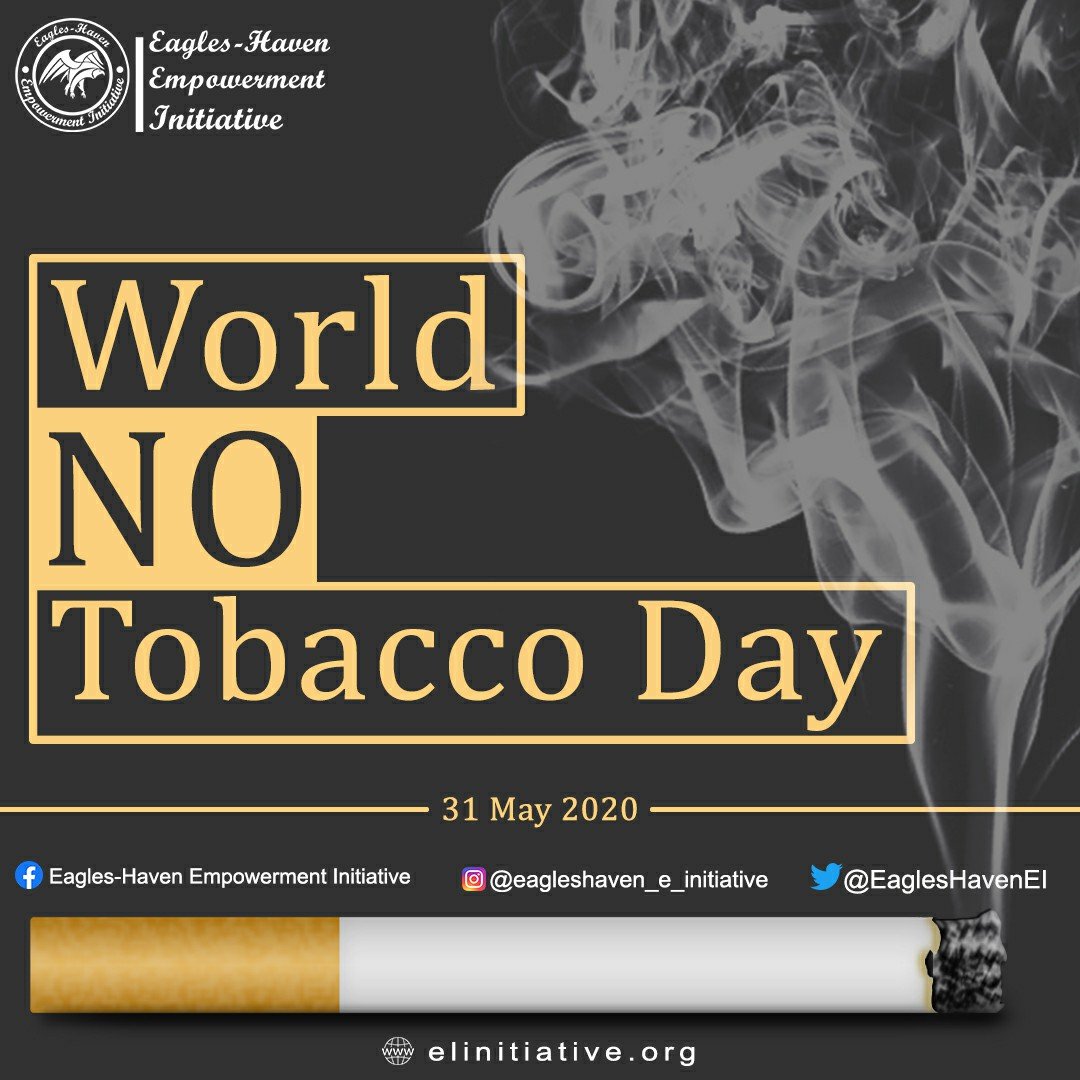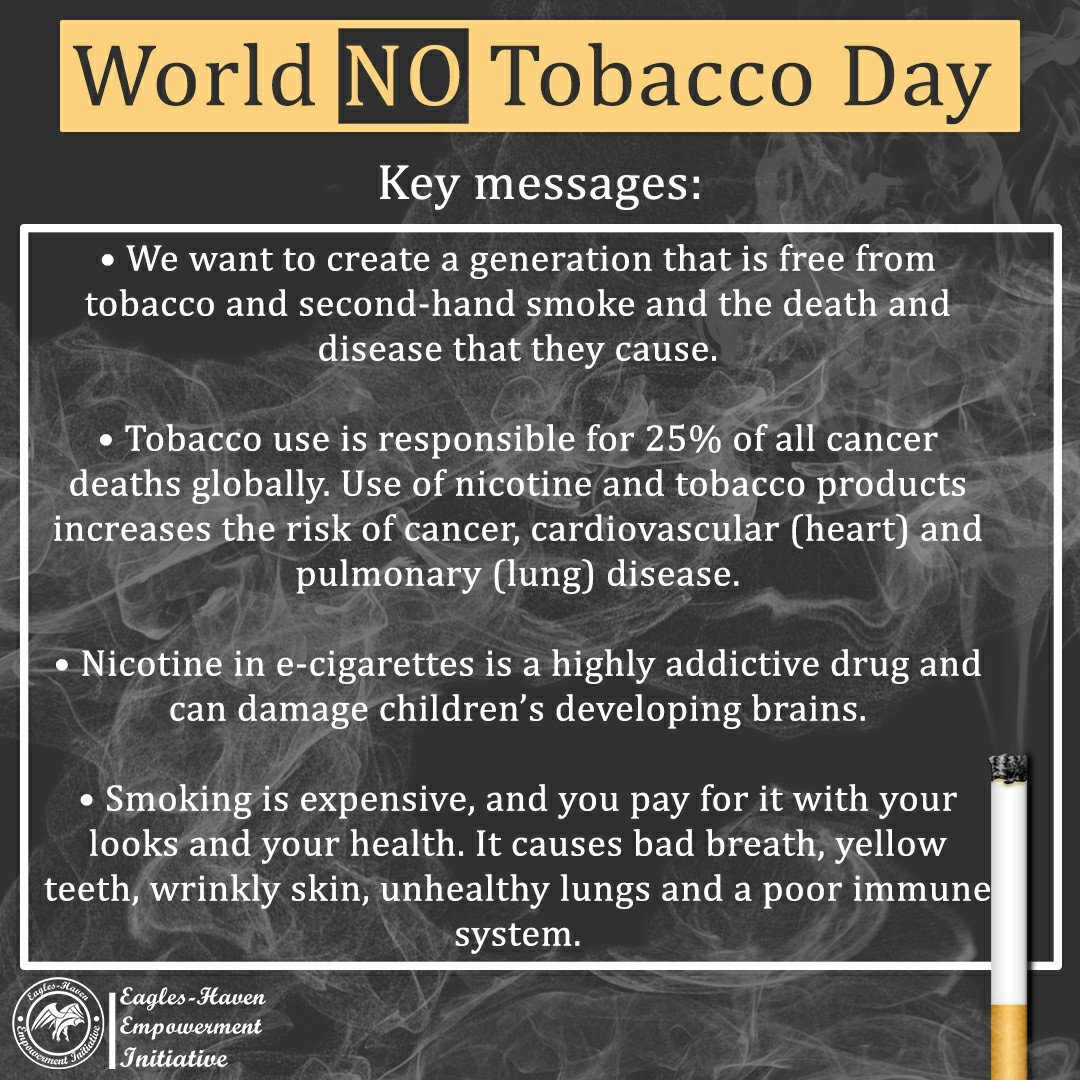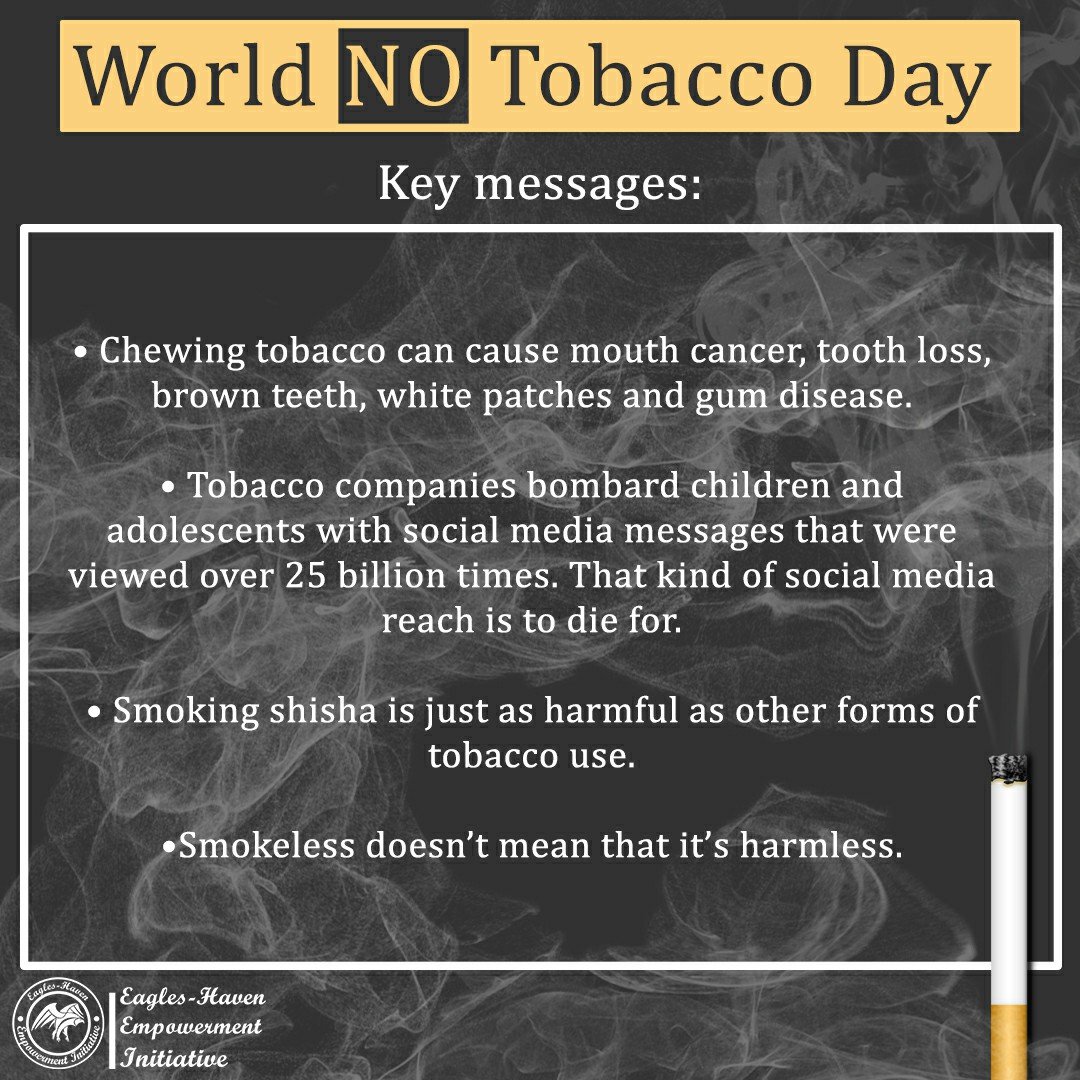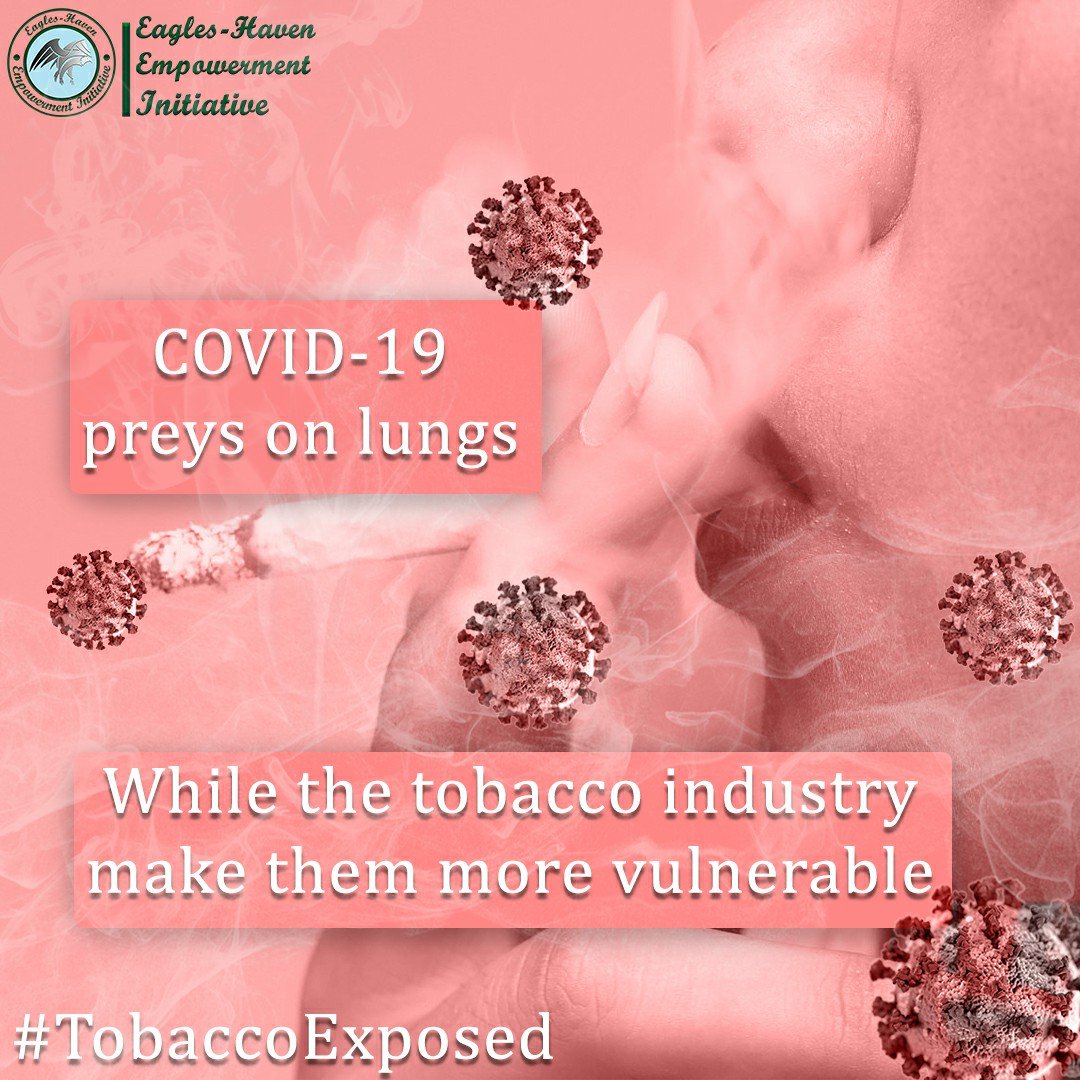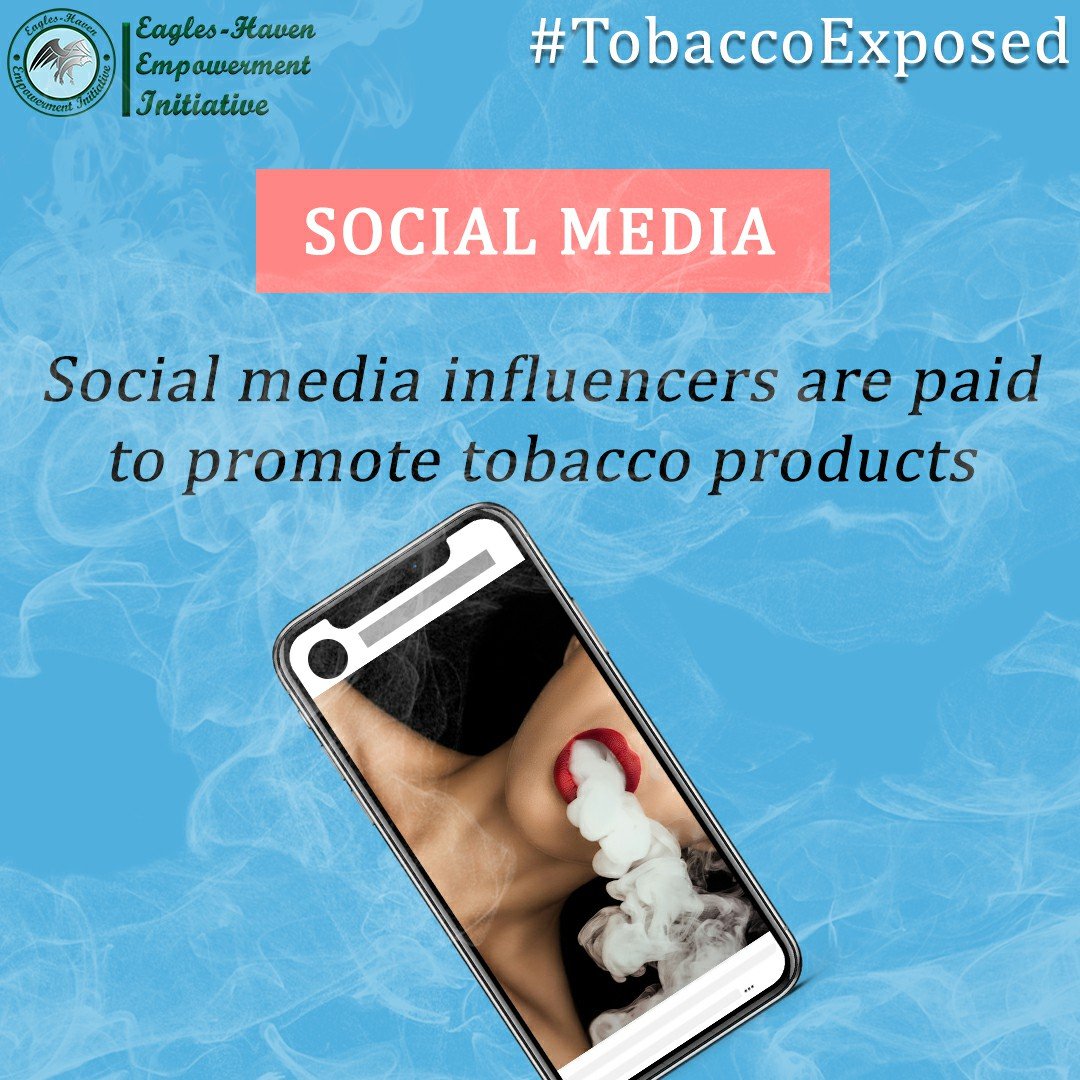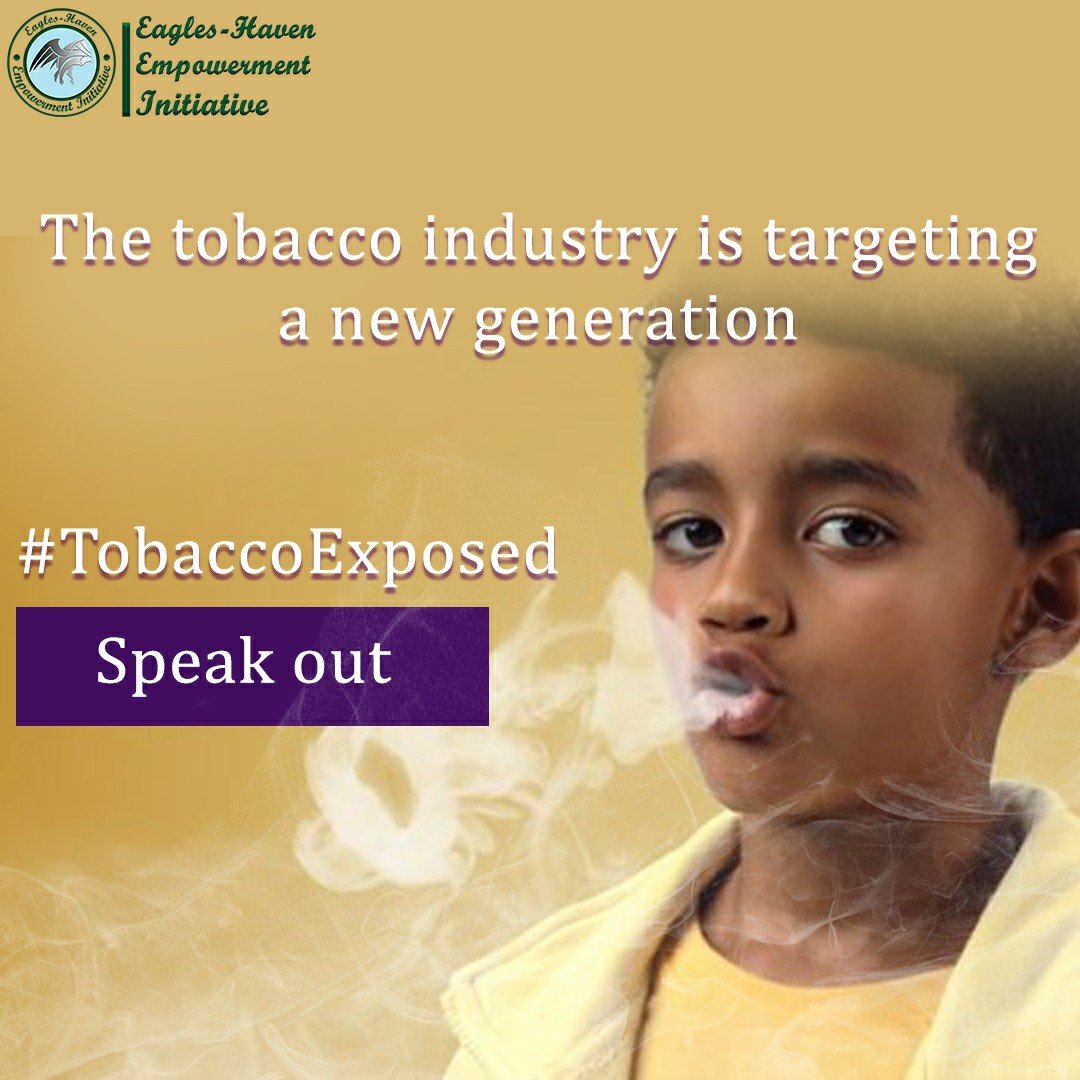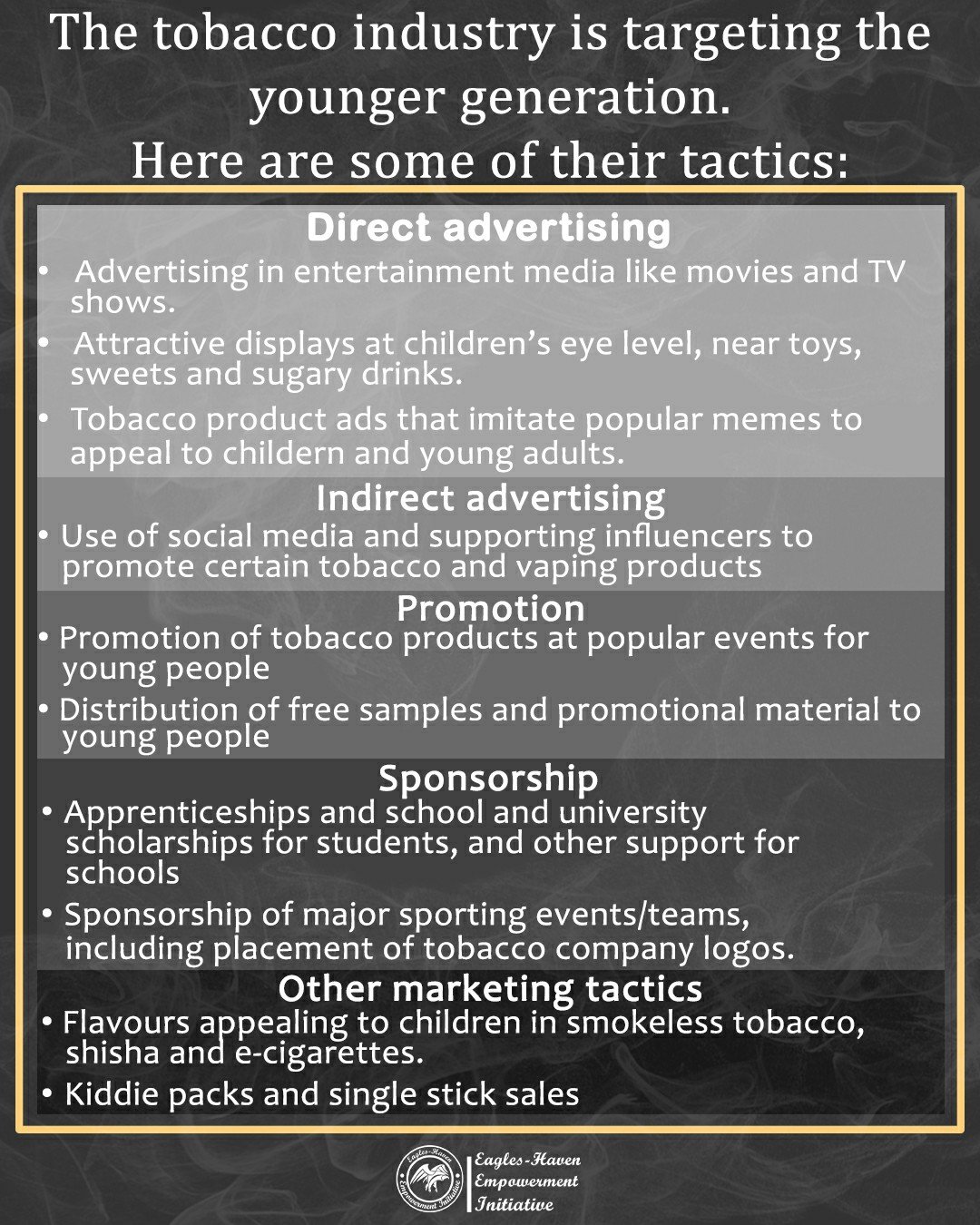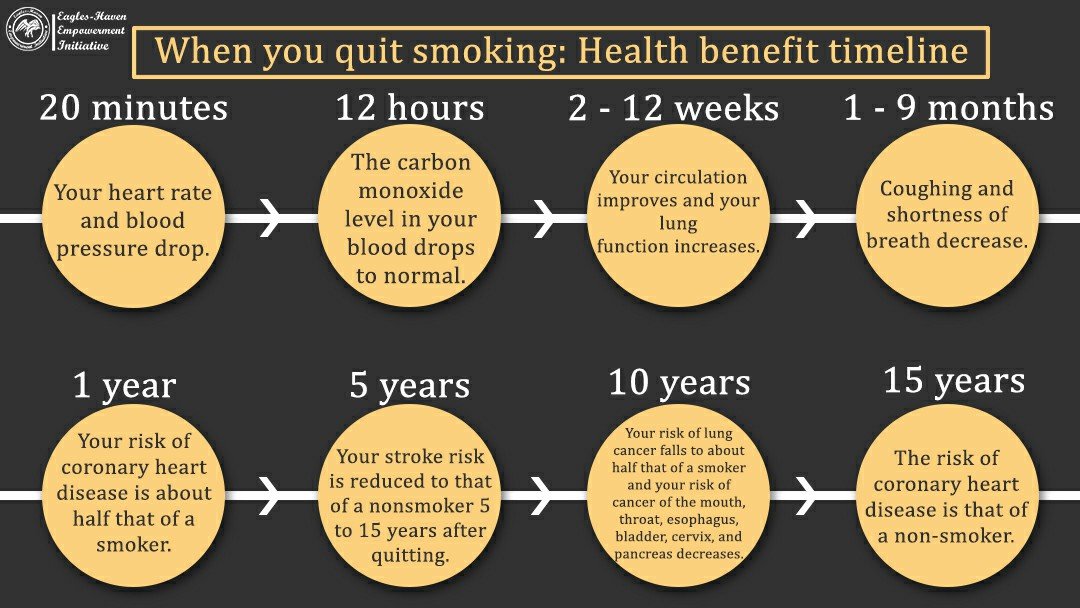World No Tobacco Day
#TobaccosExposed
The tobacco epidemic is one of the biggest public health threats the world has ever faced, killing more than 8 million people a year around the world. More than 7 million of those deaths are the result of direct tobacco use while around 1.2 million are the result of non-smokers being exposed to second-hand smoke.
All forms of tobacco are harmful, and there is no safe level of exposure to tobacco. Cigarette smoking is the most common form of tobacco use worldwide. Other tobacco products include waterpipe tobacco, various smokeless tobacco products, cigars, cigarillos, roll-your-own tobacco, pipe tobacco, bidis and kreteks.
Waterpipe tobacco use is damaging to health in similar ways to cigarette tobacco use. However, the health dangers of waterpipe tobacco use are often little understood by users.
Smokeless tobacco use is highly addictive and damaging to health. Smokeless tobacco contains many cancer-causing toxins and its use increases the risk of cancers of the head, neck, throat, oesophagus and oral cavity (including cancer of the mouth, tongue, lip and gums) as well as various dental diseases.
Second-hand smoke kills
Second-hand smoke is the smoke that fills enclosed spaces when people burn tobacco products such as cigarettes, bidis and water-pipes.
There is no safe level of exposure to second-hand tobacco smoke, which causes more than 1.2 million premature deaths per year and serious cardiovascular and respiratory diseases.
Almost half of children regularly breathe air polluted by tobacco smoke in public places, and 65 000 die each year from illnesses attributable to second-hand smoke.
In infants, it raises the risk of sudden infant death syndrome. In pregnant women, it causes pregnancy complications and low birth weight.
Smoke-free laws protect the health of non-smokers and are popular, as they do not harm business and they encourage smokers to quit.
Key messages:
• We want to create a generation that is free from tobacco and second-hand smoke and the death and disease that they cause.
• Tobacco use is responsible for 25% of all cancer deaths globally. Use of nicotine and tobacco products increases the risk of cancer, cardiovascular (heart) and pulmonary (lung) disease.
• Nicotine in e-cigarettes is a highly addictive drug and can damage children’s developing brains.
• Smoking is expensive, and you pay for it with your looks and your health. It causes bad breath, yellow teeth, wrinkly skin, unhealthy lungs and a poor immune system.
• Chewing tobacco can cause mouth cancer, tooth loss, brown teeth, white patches and gum disease.
• Tobacco companies bombard children and adolescents with social media messages that were viewed over 25 billion times. That kind of social media reach is to die for.
• Smoking shisha is just as harmful as other forms of tobacco use.
•Smokeless doesn’t mean that it’s harmless.
Are there immediate and long-term health benefits of quitting for all smokers?
Beneficial health changes that take place:
-Within 20 minutes, your heart rate and blood pressure drop.
-12 hours, the carbon monoxide level in your blood drops to normal.
-2-12 weeks, your circulation improves and your lung function increases.
-1-9 months, coughing and shortness of breath decrease.
-1 year, your risk of coronary heart disease is about half that of a smoker's.
-5 years, your stroke risk is reduced to that of a nonsmoker 5 to 15 years after quitting.
-10 years, your risk of lung cancer falls to about half that of a smoker and your risk of cancer of the mouth, throat, esophagus, bladder, cervix, and pancreas decreases.
-15 years, the risk of coronary heart disease is that of a nonsmoker's.
